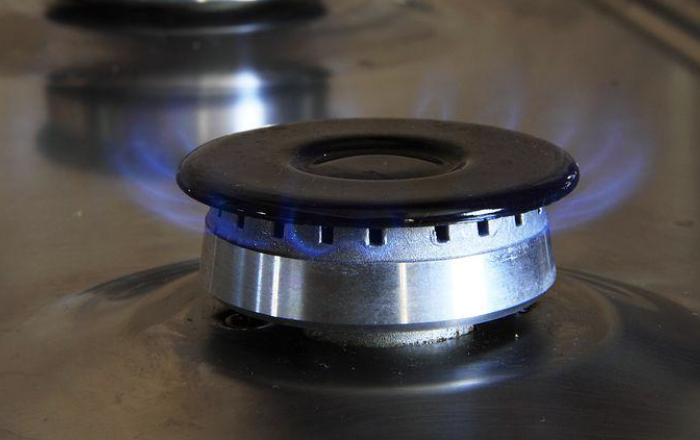
Haiden Holmes
May 10, 2022 17:31

Grid trading is an automated technique for currency trading in which an investor creates a "price grid."
The fundamental premise of the strategy is to repeatedly acquire at the specified price and then wait for the price to rise over that level before selling the position (and vice versa with shorting and covering).
This brief tutorial will offer you a thorough understanding of this trading technique and how it works.
Grid trading is a type of trading that involves placing a series of buy and sell orders at predetermined intervals around a set price. In this approach, a commerce grid is developed. Grid Trading is a forex trading strategy similar to scalping or serial basis that establishes a sequence of open and close positions with a specified spread. The trading range seems to be covered by a grid when aligned on a chart.
Grid trading is most effective in a competitive market with consistent price fluctuations. It ensures profitability if the selling price exceeds the purchasing price during a lateral price movement by automatically executing low purchase orders that lead to high sell orders, hence reducing the requirement for market forecasting.
Several elements must be examined in order to increase grid trading profits. What if I told you there was a way to benefit from this volatility? What if you could automate your trades and just sit back and watch your consistent profits pour in?
A currency pair with frequent and substantial price downs, but a very stable long-term average, for instance, is almost likely an excellent candidate for Grid Trading. Having said that, let's examine the fundamentals.

Grid trading occurs when orders are made above and below a predetermined price, forming a grid of orders at steadily rising and decreasing values. Grid trading is most often connected with the foreign currency market. Overall, the strategy aims to profit from the usual price volatility of an asset by placing buy and sell orders at regular intervals above and below a certain base price.
For instance, a forex trader may place buy orders 15 pips above and below a certain price, and this capitalizes on trends. They might also put buy orders below a certain price and sell orders above, which uses range conditions.
In grid trading, a trader must first determine his initial reference price. Multiple buy orders are then made simultaneously below this reference price at different (typically even) grid-determined levels. Sell orders are then matched with each buy order and placed above the prices of the buy orders. The same may be done on the short side, establishing a short and cover orders grid.
To automate the system, an investor must establish many parameters. These parameters include the maximum price, the lowest price, the grids themselves, position size, and stop losses.
The highest and lowest prices of the grid are often determined by the recent historical price range or the price between the market's recent highest and lowest prices for a certain price period. Thus, the parameters are significantly dependent on the historical volatility of the currency pair.
Next, the grid displays the number of pending orders made within the specified price range. When establishing the grid, transaction costs must be considered. If the grid is too thick, the profit may not be sufficient to pay the transaction costs. The position size is the amount of money or account fraction a trader employs to conduct grid trading.

Grid trading is a classic illustration of the martingale trading strategy. This indicates that the strategy raises risk and leverage as losses grow (unless a stop-loss has been hit). It is comparable to the well-known example of roulette betting strategy: constantly bet on one color, and if you lose, double your wager until you win again (or until you get broke).
Modern position size and capital management approach often reduce risk after losses and raise risk after profits. However, this does not imply that grid trading is wrong or unproductive, and it's perilous in a different manner.
Grid trading systems flourish in settings characterized by price ranges, oscillations, and sideways markets. Grid trading is the optimal strategy during such situations. Conversely, the grid trading strategy quickly becomes unprofitable if market trends continue. In other words, if the price simply goes in one direction, this does not indicate a reversal.
Grid trading is popular in the cryptocurrency trading world because it can be automated and helps traders to earn in sideways markets. Notable benefits of grid trading include:
After manually setting limitations, including grid buy/sell orders, trading bots execute trades on your behalf. Trading bots operate 24 hours a day, seven days a week, and traders may earn without monitoring price movement.
Grid trading enables traders to benefit when the market lacks a discernible trend. This strategy takes advantage of the fact that cryptocurrency values can remain flat for months at a time.
Grid density options: a trader may arrange dozens or even hundreds of automated buy/sell limit orders, which helps them reduce risk and enhance profit potential.
The concept behind grid trading is to buy cheap and sell high in the short term. Grid trading permits the execution of hundreds of distinct trading techniques depending on the number of grids, time charts, and crypto trends. The most prevalent grids have six buys and sell limit orders.
Traders are often tempted to sell their successes too soon to swiftly realize profits. However, lost trades are erroneously allowed to ride out drawdowns until retracement occurs.
Some or all of the positions may remain in the red for an extended period of time, tying up cash.
Your trade orders may execute far from your planned grid levels in volatile markets, and this may leave you unprotected.
It is crucial that your orders, stops, and limitations execute appropriately for the grid system to function effectively. If several of your trading orders fail, you may accumulate losses, which may be caused by various difficulties, including software bugs and technical issues with your broker.
Some grid trading bots are downloaded like software, while others are incorporated into exchanges; they always need identical parameters. Traders manually insert these parameters into their bot. These are the essential grid trading parameters to comprehend:
Take-Profit: the maximum cryptocurrency price you choose to establish for your deal. If the price of the cryptocurrency hits this figure, the grid will automatically sell all positions and transfer the profit in USDT or other stablecoins to your account.
Stop-Loss: Stop-Loss is the lowest price at which a transaction is automatically closed. The stop loss will be triggered, and your position will be closed at a loss if the price falls below this level.
Upper Limit: The upper limit is the maximum price limit for your grid, and the bot will not place sell orders over this threshold. The greater your upper limit, the greater you're earning potential.
Lower Limit: The lower limit is the minimum price limit for your grid, and the bot will not place buy orders below this threshold. Typically, the lower limit is somewhat greater than the stop loss.
Grid Number: The grid number indicates the maximum number of buy and sell orders that may be assigned to a grid. If you provide a grid number of 10, there will be five buy orders and five sell orders.
Maximum: 62,000 USDT
Lower limit: 60,00 USDT
Grid number: 8
Total investment: $10,000 USDT
Current BTC price: 60,998.54 USDT
At the present price, all positions are open. Because we set a grid number of eight, we must now choose eight automated buy and sell limit orders (four of each kind). We may alter our grid appropriately because the price will vary between 60,000 and 62,000 USDT.
Instead of focusing on each individual deal inside the grid, observe the grid as a whole. Set profitability objectives for your grid, such as 5 or 10 percent, and close your transaction when you reach them.
The optimal period for grid trading is when daily price variations are less than 2 to 3 percent. If the price of cryptocurrency grows significantly, the bots will benefit early. If the price declines rapidly, the stop losses will be activated.

Grid trading is prevalent in foreign currency (FX) markets because of sideways price behavior. In foreign trading, prices tend to stagnate for years. For example, the value of the US dollar has maintained around 85 percent of the value of the Euro for nearly a decade. Grid trading is the optimum method for dealing with such sideways movement.
Whether you're interested in spot trading or futures markets, putting a grid trade order on Binance and other cryptocurrency exchanges will be quite comparable. While some trading bots need the installation of additional software on your computer, spot grid trading on Binance may be managed straight from the app or website. The spot grid trading area of Binance is included inside the "Strategy Trading" portion of the exchange.
Once you are on the correct page, you will need to specify five fundamental parameters for your spot grid trading activity. You must first establish a lower limit for your deal, which is the bottom of the range you want to trade. Next, you must establish an upper limit for your deals. Outside of this range, no deals will be completed. As a general rule, your profit potential will improve as the range between your lower and higher boundaries increases. Thirdly, you must specify your grid number, which is the number of buy and sell orders you want to distribute equally between your higher and lower bounds. A grid number of eight, for instance, corresponds to four buy orders and four sell orders.
Take-profit and stop-loss are the last two parameters you must examine. Take-profit is the price at which the spot grid trading robot will exit all positions for a profit. As you may have guessed, the stop-loss parameter prevents your trading strategy from incurring a huge loss. You will be fully removed from your positions when the price reaches your stop-loss target. However, this time the automated action is designed to minimize more losses as opposed to securing profits. If none of your transactions from your spot grid trading strategy execute in a timely manner, you may want to explore adjusting these parameters regularly.
You may be able to enhance your manual grid trading strategy by incorporating other trading tactics.
Before setting up your forex grid system, you might utilize the Average True Range (ATR) indicator to monitor price range volatility in the market. This may be called an ATR grid trading strategy.
Another strategy uses Gann lines. These lines overlap across a trading chart, and they aim to identify possible upward or negative price movements. Some lines depict the price's general direction, while others suggest support and resistance lines. Understanding which way the price may or may not trend might give further knowledge when designing a trading strategy. This is a Gann grid trading strategy.
Risk-averse crypto traders want to know that their positions are hedged. The good news is that grid trading is naturally hedging since it includes several deals, and positive trades may balance negative bets. You may further reduce risk by monitoring the bots' trades and cautiously placing stop-loss and take-profit orders.
In addition, a trader must be aware of industry trends and news. The price of cryptocurrencies may swiftly rise or depreciate in response to news coverage. Positive news, such as new exchange listings, have a tendency to increase prices. Bad news, such as governmental laws or software faults, tends to decrease pricing.
Grid traders must also carefully choose a cryptocurrency exchange to avoid paying excessive fees on the hundreds of transactions they execute.
Grid Trading has existed for quite some time and is an established, lucrative trading strategy. There are several instances of successful traders actively using it for decades on all types of markets. Due to its tremendous volatility, the cryptocurrency market has shown to be one of the most trustworthy environments for Grid Trading techniques.
It is simple to comprehend and implement because the strategy does not involve any algorithms, indicators, or complex market signals. Setup will be simple for those with no expertise in the cryptocurrency trading markets.
Because the strategy is based purely on the most fundamental concept of trading (buy low, sell high, gain the difference) and nothing more, it can be applied to nearly any market to generate a profit regardless of the trend or market behavior.
By selecting the price range and number of grids, you determine the frequency and duration of the strategy.
It may be configured for the short term, executing hundreds of transactions every hour to capture micro profits from all of the day's minute movements.
It may also be set up for the long term by selecting a wide range, allowing it to operate for months and benefit from every significant trend shift.
Grid Trading is an optimal strategy for market making. It helps offer liquidity and generates an enormous amount of trading volume for the trader if set up for that purpose.
But (despite the fact that most Grid Traders do not consider it), it may also be highly effective on illiquid markets with thin order books. These markets are characterized by frequent and rapid price fluctuations (5 percent up, 7 percent down, etc.) You can simply "eat" all of these surges and convert them into a good profit by supplying liquidity using a Grid Bot. Not only is it beneficial for the exchange you are trading on, but it also lets anybody who wants to trade on the illiquid pair do so at a reasonable price.
In general, cryptocurrencies provide a variety of benefits for grid trading. They are 24-hour marketplaces, allowing for more trading possibilities. Volatility affords possibilities to capitalize on price discrepancies. Grid trading is not impacted by human emotions and is solely determined by code. Grid trading will generate orders at gradually rising and decreasing prices to benefit from market volatility by analyzing market dynamics. Consequently, individual investors will benefit from the market's price discrepancy.

May 10, 2022 16:36

May 10, 2022 17:42